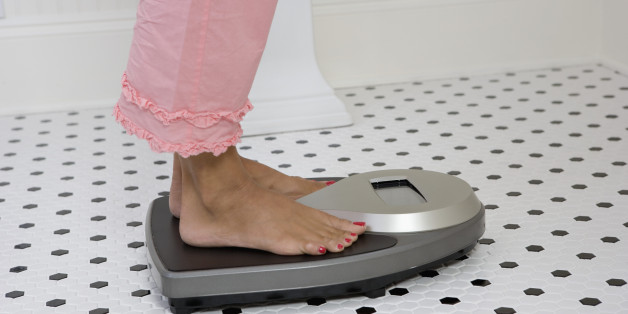Abdominal Fat Poses Risks To Your Health - You Can Fight It!
Unless someone has been blessed with the perfect genetic makeup, most adults in the civilized world today, especially women, have struggled with some amount of abdominal fat. We hate it. It's unattractive, inconvenient - and it could seriously impact our health.
Where does this fat come from? Why is it so hard to get rid of? Why don't exercises make it disappear? There are many factors at work.
As most of us know, the fat we carry on our bodies comes from the foods we eat. There have been enough weight-loss programs and diet information around for the last few decades that we know that if we eat more calories than we expend, we're going to gain weight as fat.
Each person's genetics play the main role. As soon as we are conceived, we have a genetic "map" for what our hair and eye color will be, the size and shape of our nose, our height, our body type, and how our fat will be distributed over our body. Some people's metabolism is programmed from conception to run at a faster rate throughout their lifetime, and these people will naturally be thinner than other people. Environmental factors do play a part, but genetic makeup is the key factor.
Women face a special challenge with abdominal fat. In pre-menopausal years, women have fat distributed in the arms, legs, thighs and hips as well as in the belly. As women pass into menopause and the hormone levels change, fat moves from the limbs, thighs and hips into the abdomen. For this reason it's possible for women's waistlines to become bigger without any appreciable weight gain.
It's not just the fat you can see in the mirror. Abdominal fat also lives in the muscles of the abdomen, and crowds the organs in that part of the body. When the organs are crowded, it can cause difficulty in breathing, circulation, and other organ functions. Also, the heart has to work harder to pump blood through these crowded areas of the body. This raises the blood pressure, which in turn speeds up a process of wearing down of the lining of the arteries. When the lining of the arteries is worn down, the body becomes more susceptible to stroke and other health problems.
Abdominal fat affects hormone levels throughout the body. Research has shown that it promotes the development of adult-onset diabetes and several kinds of cancer including colorectal and breast cancer.
It seems harder to get rid of abdominal fat than any other kind of fat because fat loss happens all over the body uniformly, not just in one area. Much as we'd like to just target the belly, the fat is going to come off from around the whole body, and not just the abdominal area. When they diet, people who wear the same rings every day will probably notice that as their belly starts to shrink, their rings will begin to get looser too, because the fat comes off everywhere - fingers too.
How much abdominal fat is too much? There are a couple of rules of thumb to go by. First, measure around the belly at the level of the navel. Don't suck in and don't push the belly out. Just stand normally and wrap a tape measure around without pulling tight, and see what the measurement is. One source suggests that your waist should not measure more than half of your height. Another source suggests that, no matter what your height, your waist measurement should not be more than 33 to 35 inches.
The good news is that we can combat our abdominal fat, no matter what our genetic pre-programming is. The baby boomer generation, currently the adult generation starting to move into the senior years, was raised in a more sedentary lifestyle than any preceding generation, and ate a more processed and fast-food diet than any other generation. This lifestyle leads to a lot of health problems. Members of this generation should focus on making a real lifestyle shift in order to reclaim their best health and reduce their abdominal fat.
Here are some ideas to work with. Eat smaller portions, and replace some of your pastas and simple carbs with vegetables and fruits. No canned fruits - they are loaded with sugar. Keep limits on fruit juices too, because they are loaded with sugar. Increase exercise too. When you develop more muscle, your metabolism is higher because lean muscle requires more calories than fat does for maintenance. So, with more muscle you win two ways: you expended calories to build that muscle, and the muscle itself raises your metabolism and consumes more calories just by being there.
Weight training is great for building muscle, and to get some cardio, you don't have to run at top speed. You can walk briskly for a half hour to an hour five or six days a week to reap the benefits of cardio exercise. As a rule of thumb, walk at a pace where you can still hold a conversation, and you'll be fine. Also, be sure you get enough sleep - but not too much. Research has shown that people who consistently get less than five or more than eight hours of sleep per night tend to put on more abdominal fat than those who get the proper amount of rest.
Apply these tips and you will be well on your way to much less abdominal fat and a much healthier lifestyle.
-
Obtain Six Pack Quick
It is safe to say that every man want to have a six pack abs. Possessi
-
Eat More and Weigh Less
Many people beginning a new weight loss program believe they need t
-
10 Ways To Lose 10 Pounds Without Even Trying
Who wants to count calories or diet? We hear you. But y
-
The Cost Of Slim Band Surgery In Canada: Cheaper Than In The United States
With more and more people becoming obese and having problems losing th
-
The Scientific Reason Why You Still Feel Hungry After You Eat
One little ingredient in
-
6 Surprising Ways To Control Your Appetite & Lose Weight
- DON'T MISS
- Lack of Sleep: A Weighty Issue
- Weight Loss Drinks To Quench Your Cravings
- 8 Points to Ponder Before You Buy Diet Pills Online
- How To Enjoy Yourself Without Feeling Stuffed Or Depressed
- Holiday Diet Tips and Healthy Ideas
- Sugar is Killing You
- Suggested Fat Loss Principles - Important Facts You Might Not Be Aware of
- Eat, Drink and Be Merry Without Packing On The Pounds
- Get rid of Thigh Weight – Get Thin Sexy Legs
- Society Dislikes Fat Women – Shocking Study




